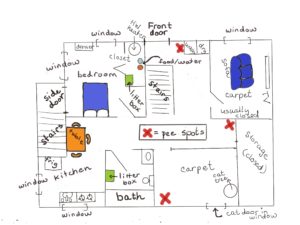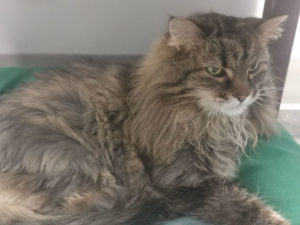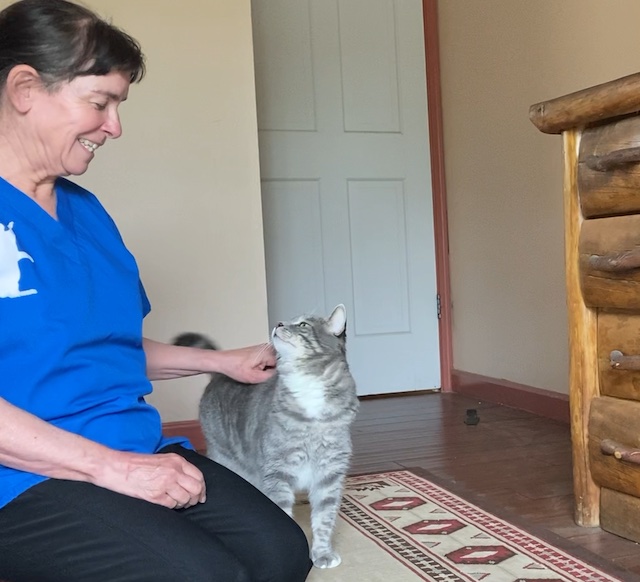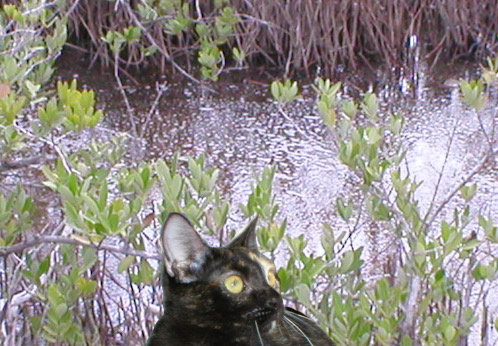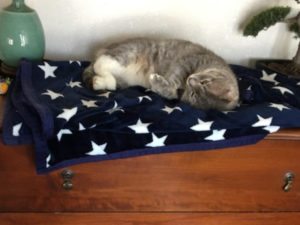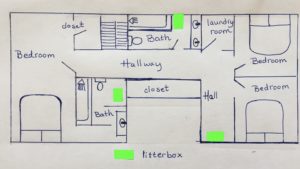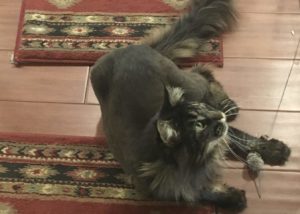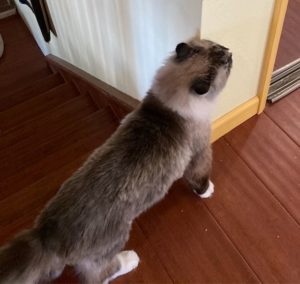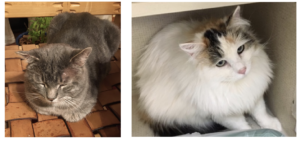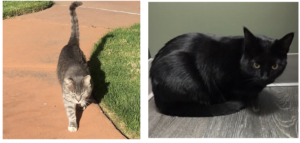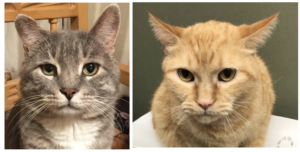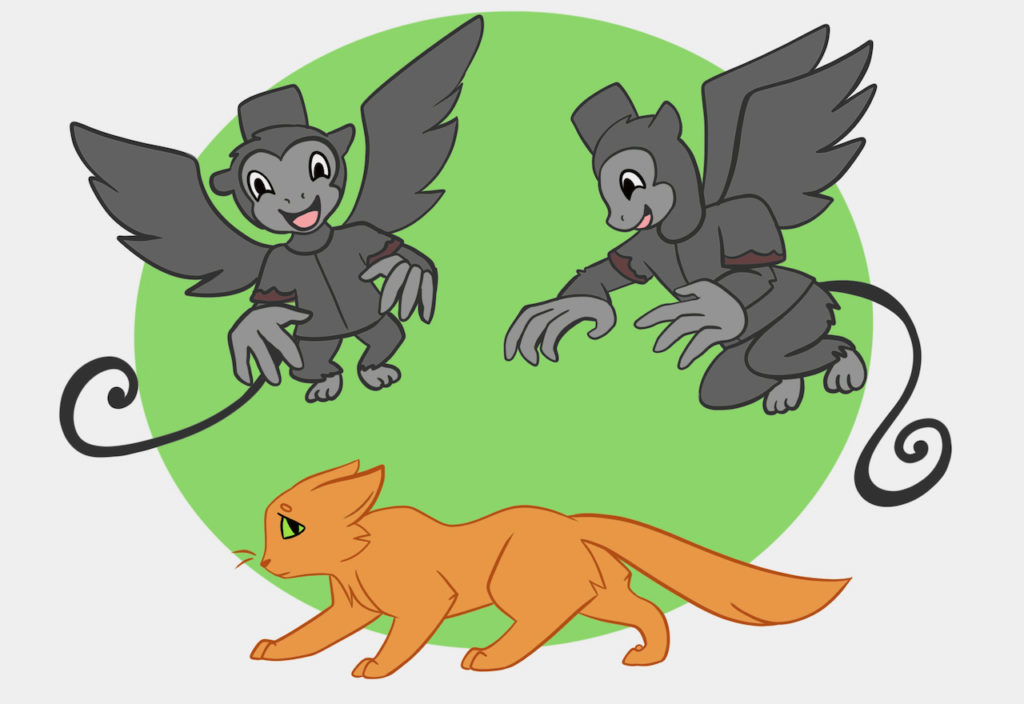
This post was originally published on 9/11/22. This newer version has been updated to reflect recent changes in handling and training cats.
Picking up your cat can be frightening for him. Imagine being suddenly snatched up by a giant from your favorite chair. You are lifted up into the air, your legs flailing as you try to maintain your balance. Scary, huh?
Some of the more exciting scenes in fantasy movies include the hero or heroine being snatched up and taken away. In the Wizard of Oz, a troop of flying monkeys swoop down and grab up Dorothy and her dog, Toto, taking them to the castle of the Wicked Witch of the West. A giant ape carries Ann Darrow up the Empire State Building in the movie “King Kong”, as the audience shrieks and squeals.
But, you say, I pick my cat up all the time and he does not seem to mind. In certain circumstances though, he might redirect his fear as aggression and bite or scratch you, if you try to pick him up, say, to move him away from the vacuum cleaner.
Okay, so maybe you can coax him to go where you need him to by using treats or a target stick. But there still will be times when picking up your cat is necessary – for example, you may need get him out of the way of a car. What can you do?
Picking Up Your Cat – ask first please and don’t get scratched!
Gus, a street cat caught in a live trap, would thrash and flail, biting and scratching when he was picked up. Gus responded well to training so I wondered if I could teach him to be picked up, in the same way he learned to sit and target.
Picking up a cat involves the following steps:
- Slide one arm under his chest and the other over his hindquarters, supporting his back legs underneath.
- Lift and carry.
I broke down the process of being picked up into the following steps:
- Tell the cat that you are going to pick him up. “I am going to pick you up” or “OK to pick you up?”
- Count to 3 before reaching out to touch him.
- Get next to the cat and slide your arms around him, like you are going to pick him up. Give the verbal cue “UP”, then say “DOWN” put him down as you release him. Say “Good” and reward.
- The next step is to pick him up briefly, lifting him off the ground, with the cue “UP”. Say “DOWN” as you put him down on his feet. Say “good” and reward.
- Increase the time you hold the cat after picking him up. Be sure to mark picking up with the cue “UP” and putting down with “DOWN”. Let kitty know he’s done well by saying “Good” and rewarding him.
Key points to take away
- Go slowly – if your cat starts to flail or squirm, go back to the step before: hold him for a shorter period of time or don’t lift him as high.
- Be sure to alert your cat to the fact he will be picked up. Whenever possible, give your cat time to process that he is going to be picked up – count to 3 before reaching to pick him up.
- When training the “pick up” behavior, allow the cat a few seconds to process what has happened before lifting him higher or for longer – give him a break between trials.
- Don’t hesitate to “talk” your cat through the process, telling him what is going to happen and what is happening. The sound of your voice and what you are saying will keep him consciously engaged in the process, instead of panicking and flailing, because he is fearful of the outcome.
Picking up your cat does not need to be traumatic. Training Gus to be picked up was so successful that I taught all my cats this. Gus still squirms sometimes when the hold is taking him somewhere he does not fancy going… but, the biting and scratching has stopped! And he is rewarded for his patience with treats or head rubs when we arrive at our destination.

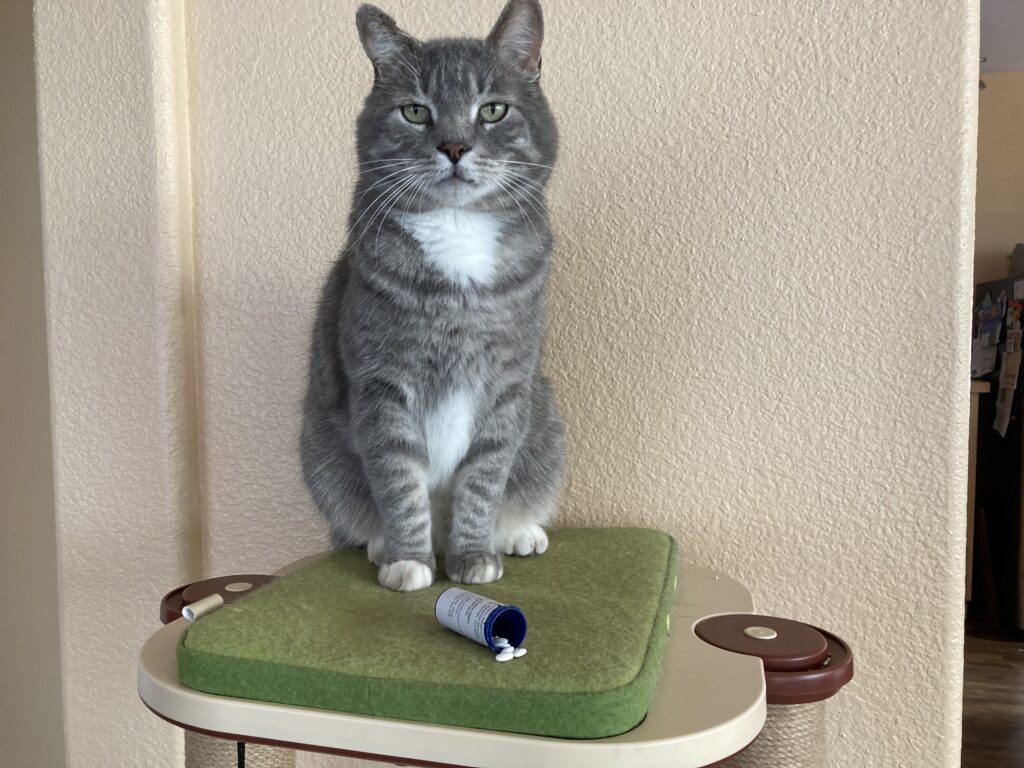 Sometimes, fear and anxiety can make it difficult for a cat to cope with her daily life. Perhaps there has been a change in the environment – a new cat or dog comes to live in the home or a new born baby comes home one day.
Sometimes, fear and anxiety can make it difficult for a cat to cope with her daily life. Perhaps there has been a change in the environment – a new cat or dog comes to live in the home or a new born baby comes home one day.